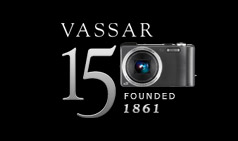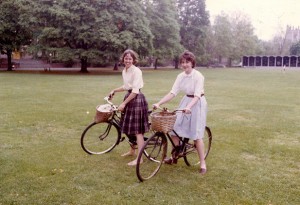Lectures
by Susan Donahue Kuretsky, Class of 1963
I had absolutely no idea there was a field called art history before I came to Vassar. I discovered it by complete accident the first day I attended an Art 105 lecture. Christine Havelock began the course with a slide of the archaic Greek Kouros in the Metropolitan Museum and as soon as she opened her mouth (she also had an exceptionally beautiful voice), I experienced something analogous to a religious conversion. This is one of the reasons I have remained such a passionate advocate of this course and of all survey courses – they open doors to students who may not have even known the doors were there.
I wrote a paper on (as I recall) Rembrandt that Agnes Claflin thought was full of unseemly emoting and fuzzy thinking. She hated it and I am sure she was right because it had much more to do with me than with Rembrandt. But her response was interesting and original. I’ve never forgotten it though I’ve also never tried it on my own students. She decided that the best way to correct my sloppy thinking was with a prescription (as a doctor might order a medicine to cure an illness)—writing another paper on a Cézanne still life in the Metropolitan Museum. “You go work on those apples, Miss Donahue,” she said sternly. I remember spending the entire Christmas break sweating over that paper and learning something that still seems like a breakthrough: you can learn more of value by getting outside yourself than by internal wallowing. And second, if someone bothers to criticize you and give you a special prescriptive exercise, maybe, just maybe, you can begin to take yourself seriously in that field.
As an undergraduate here I vividly remember reading a novel by May Sarton called The Small Room. It was about a young female English professor in a college for women, much like Vassar was at that time, and how she handled her students’ wish for personal friendship beyond the classroom and her office (which she called “the small room”). The point of the book, which made a great impression on me, was that no one can teach or learn without some sense of real and living personal connection between teacher and student, but that it is an inherently unequal relationship that must be handled carefully and with great tact. I’d still agree with that, but for me it was the people within their professional roles and their deep engagement in their subjects that impressed me most – their inspiring, original, faultlessly prepared lectures and the degree of commitment and interest in the life of the mind that they conveyed. This was a more formal time and the lectures professors gave, in the Art Department at least, were sometimes almost theatrical performances in their degree of polish in content and delivery. As I recall there was only one seminar in the department on “modern art” in which students gave reports and Mrs. Claflin listened. This frightening ritual is a vivid memory, but the higher points were the great lectures I heard.
Susan with roommate Sudye Neff, around 1962
You might also like
- Vassar Changed the Direction of My Life
- Doing a Little to Better the Human Condition
- Growing up in Poughkeepsie
- Reaching Common Ground
- A Question That Changed My Life
Most shared
- Vassar Visiting in 1899
- A Daisy Chain Connection
- How In The World Did I End Up Here
- From Hoe-Downs to Scrum-Downs: The Vassar Farm and Vassar Rugby
- The (Non-Academic) Value of a Vassar Education

